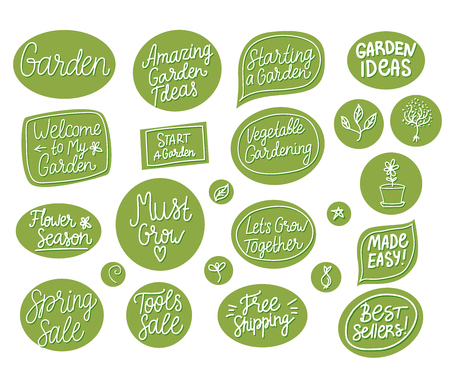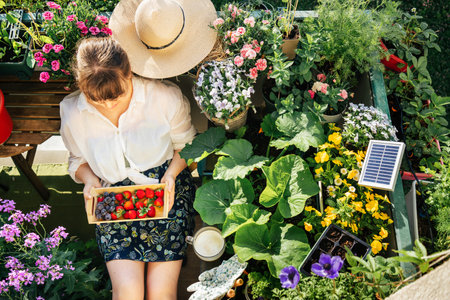Introduction to Seasonal Colour in English Gardens
Seasonal colour planning has long played a pivotal role in the design and enjoyment of English gardens, both grand and modest. The practice is rooted deeply in the nation’s horticultural heritage, where the changing tapestry of hues reflects not just the passing months, but also cultural values and artistic aspirations. From the stately grounds of historic manor houses to the intimate plots behind terraced homes, the orchestration of colour through the seasons is celebrated as an essential element of garden craft. Historically, influential figures such as Gertrude Jekyll pioneered intricate colour-themed borders, drawing on painterly principles to evoke emotion and narrative throughout the year. In contemporary settings, gardeners continue this legacy—adapting traditional palettes and techniques to suit modern lifestyles while remaining mindful of ecological considerations. As we explore the principles underpinning seasonal colour planning, it becomes clear that this practice is more than mere aesthetics; it is a living expression of British cultural identity, resilience, and an enduring passion for nature’s cycles.
Principles of Colour Theory for Garden Design
Understanding and applying colour theory is a cornerstone of successful seasonal planting in English gardens. A thoughtful approach to colour selection not only enhances visual appeal but also evokes mood and accentuates the unique character of each garden space. Below, we provide an overview of essential colour theory concepts and their practical use in garden design.
Basic Colour Theory Concepts
The classic colour wheel forms the foundation of any colour planning exercise. It divides colours into three categories: primary (red, blue, yellow), secondary (green, orange, purple), and tertiary (such as blue-green or red-orange). By understanding relationships between these colours, gardeners can develop planting schemes that are both harmonious and dynamic.
Common Colour Schemes
| Scheme Type | Description | Garden Application Example |
|---|---|---|
| Complementary | Colours directly opposite each other on the wheel (e.g., blue & orange) | Blue delphiniums with orange geums for striking contrast in a summer border |
| Analogous | Colours adjacent on the wheel (e.g., yellow, yellow-green, green) | A gentle transition from pale yellow daffodils to lime euphorbia and fresh green ferns in spring beds |
| Monochromatic | Variations of one single hue, using different shades and tints | Purple alliums, lavender, and salvia grouped for a soothing effect in early summer displays |
| Triadic | Three colours equally spaced around the wheel (e.g., red, yellow, blue) | A playful mix of tulips in red, yellow, and blue for cheerful spring containers or borders |
Creating Harmony and Balance
The goal in any English garden is to achieve balance—avoiding both monotony and discord. Complementary schemes deliver bold statements suitable for focal points or contemporary gardens, while analogous schemes offer a more subtle flow ideal for traditional cottage borders. Monochromatic designs are often used in formal gardens or themed areas where restraint is key. Triadic arrangements introduce lively diversity without overwhelming the senses.
When planning across seasons, it is important to anticipate how plant colours will shift with flowering times and foliage changes. Thoughtful placement and succession planting ensure that colour harmony endures from spring’s first flush through autumn’s mellow hues. Ultimately, understanding the principles of colour theory empowers gardeners to craft spaces that are both visually appealing and deeply expressive of the English gardening tradition.

3. Understanding Seasonal Plant Choices
When planning for year-round colour in English gardens, the selection of appropriate plant species and cultivars is fundamental. The British climate, with its cool springs, mild summers, unpredictable autumns, and often wet winters, requires thoughtful choices to ensure consistent visual interest. Prioritising native varieties not only increases reliability but also supports local biodiversity and reduces maintenance demands.
Spring: Early Colour and Emerging Growth
Spring heralds the awakening of the garden. Focus on bulbs such as Narcissus (daffodils), Galanthus (snowdrops), and Crocus, which offer early splashes of yellow, white, and purple. Native primroses (Primula vulgaris) and the classic English bluebell (Hyacinthoides non-scripta) add gentle hues and thrive in partial shade. Shrubs like flowering currant (Ribes sanguineum) provide both blossom and structure.
Summer: Abundant Blooms and Vibrancy
With longer days and warmer temperatures, summer allows for a wider palette. Traditional perennials such as Geranium, Lupinus (lupins), and Delphinium deliver bold colours and height. Roses—particularly heritage varieties—are quintessentially British, providing scent as well as colour. For continuous bloom, incorporate repeat-flowering cultivars and annuals like cosmos and sweet peas.
Autumn: Warm Tones and Foliage Drama
The transition to autumn is marked by rich reds, oranges, and golds. Choose shrubs such as Cornus sanguinea (dogwood) for colourful stems, and perennials like Aster novi-belgii (Michaelmas daisy) for late-season flowers. Native trees—rowan (Sorbus aucuparia) or field maple (Acer campestre)—offer vibrant foliage alongside berries that attract wildlife.
Winter: Subtlety, Structure, and Evergreens
The winter garden in Britain may appear subdued but need not be dull. Rely on evergreen shrubs like holly (Ilex aquifolium) and yew (Taxus baccata) for formality and depth. Winter-flowering plants such as Helleborus niger (Christmas rose) provide delicate blooms against a stark backdrop. Ornamental grasses and architectural seedheads also contribute texture during these months.
Selecting Cultivars for Reliability
To ensure success throughout the year, favour cultivars bred for disease resistance and climatic suitability within the UK. Consult local nurseries or the Royal Horticultural Society’s plant selector tools for advice on proven performers in your region.
Cultural Considerations
Avoid over-ambitious schemes that require intensive intervention; instead, allow the character of the British landscape to guide plant selection. Embrace naturalistic drifts of colour rather than rigid patterns, mirroring traditional English gardening sensibilities while ensuring each season brings its own sense of delight.
4. Design Strategies for Year-Round Interest
One of the defining features of an accomplished English garden is its ability to remain captivating through all four seasons. Achieving this requires a thoughtful and practical approach to planting that considers not just individual plants, but their interactions over time. Below, we explore key strategies—layering, succession planting, and effective combinations of perennials, shrubs, and bulbs—to ensure continuous visual appeal throughout the year.
Layering: Creating Depth and Texture
Layering involves arranging plants at varying heights and densities to mimic natural ecosystems while maximising colour, texture, and interest in every season. This method ensures that as one layer fades, another comes into prominence. A well-layered border typically includes:
| Layer | Example Plants | Seasonal Role |
|---|---|---|
| Canopy | Amelanchier, small ornamental trees | Spring blossom, autumn foliage |
| Shrub Layer | Cornus, Viburnum, Rosa rugosa | Winter stems, summer flowers/fruits |
| Perennial Layer | Geraniums, Hemerocallis, Sedum | Spring to autumn blooms |
| Groundcover/Bulbs | Crocus, Cyclamen, Primula | Early spring/late winter colour |
Succession Planting: Seamless Seasonal Transition
The goal of succession planting is to ensure that as soon as one group of plants finishes flowering or providing interest, another takes over. This can be achieved by careful selection and placement of species according to their peak periods. For example:
- Early Spring: Snowdrops (Galanthus), daffodils (Narcissus)
- Late Spring: Alliums, tulips mixed with emerging perennials like aquilegias
- Summer: Hardy geraniums, roses paired with herbaceous borders (e.g., delphiniums)
- Autumn: Sedum ‘Autumn Joy’, asters, ornamental grasses for movement and seed heads
- Winter: Cornus alba for coloured stems, hellebores for blooms in the coldest months
Combining Perennials, Shrubs, and Bulbs: Practical Pairings
The magic of an English garden often lies in thoughtful plant pairings that create harmony or striking contrast through leaf form, flower shape, and colour. Consider combining evergreen shrubs for structure with waves of bulbs and perennial drifts for dynamic seasonal highlights. A simple example might include:
| Shrub/Structure Plant | Underplanting Bulbs/Perennials |
|---|---|
| Buxus sempervirens (box hedging) | Tulipa ‘Queen of Night’, Muscari armeniacum in spring; lavender for summer scent and texture contrast |
| Cornus sanguinea (dogwood) | Crocus tommasinianus in late winter; hardy geraniums for summer groundcover; cyclamen in autumn for late-year colour burst |
Tuning Your Planting Plan to British Conditions
Bearing in mind the unpredictability of British weather—mild winters interspersed with frosts and damp summers—choose resilient cultivars suited to your local microclimate. Employ mulching and well-prepared soil to support year-round performance.
A Note on Maintenance: Keeping Interest Alive
No garden is truly low-maintenance if you seek continual interest; deadheading faded blooms, timely pruning of shrubs after flowering, and refreshing bulb displays every few years will keep your garden vibrant from January through December.
5. Local Context: Soil, Weather, and Microclimates
Understanding the local context is a cornerstone of successful seasonal colour planning in English gardens. The interplay between Britain’s soils, rainfall patterns, and microclimates fundamentally shapes which plants thrive and how their colours are expressed throughout the year.
British Soils: Diversity and Implications for Colour Planning
The UK boasts a remarkable diversity of soil types, from heavy clay in the Midlands to sandy soils in East Anglia and chalky ground in the South Downs. Each type has distinct drainage properties, nutrient profiles, and pH levels. For instance, acid-loving plants such as rhododendrons or camellias flourish in peaty or sandy soils but struggle in alkaline chalk. When planning for year-round colour, it is essential to match plant choices not only to seasonal interest but also to specific soil conditions. Soil testing is an invaluable step; knowing whether your garden leans acidic or alkaline will directly inform your palette.
Rainfall: Regional Variations and Plant Health
Britain’s reputation for rain is well earned, but rainfall distribution is far from uniform. Western areas like Cumbria receive high annual precipitation, while parts of East Anglia may see prolonged dry spells. These variations influence not just irrigation needs but also plant selection for sustained vibrancy. In wetter regions, robust species such as astilbes or hostas can bring lush texture and bold colour, whereas drought-tolerant perennials like lavender or eryngium are more suitable for drier counties. Factoring in local rainfall ensures that your colour schemes endure rather than fade prematurely due to environmental stress.
Microclimates: Exploiting Garden Nuances
Even within a single garden, microclimates can create pockets of unique growing conditions. South-facing walls might support tender exotics such as agapanthus or salvias that would otherwise falter in open beds. Sheltered corners shielded from prevailing winds may allow early-flowering bulbs or delicate annuals to persist longer into the season. By observing these subtle differences—sunlight hours, wind exposure, frost pockets—you can refine your planting plan to maximise both plant health and the continuity of colour through each season.
Practical Tips for Integrating Local Conditions into Colour Planning
- Test Your Soil: Use affordable kits to determine pH and texture before making planting decisions.
- Observe Water Patterns: Take note of areas prone to waterlogging or drought; adjust species accordingly.
- Map Microclimates: Keep a seasonal diary of where frost lingers or sun hits longest; use this knowledge to stagger bloom times for extended impact.
A Thoughtful Approach Yields Lasting Results
The secret to evocative, resilient English garden colour lies in accepting—and celebrating—the quirks of your local environment. By working with the unique characteristics of British soils, weather patterns, and microclimates, gardeners can craft displays that harmonise with nature while delivering dynamic beauty across all seasons.
6. Practical Maintenance and Ongoing Care
Seasonal colour planning in English gardens is not a one-off task; it requires continuous attention to ensure the landscape remains vibrant, healthy, and true to its design throughout the year. Sustainable upkeep is fundamental, not only for aesthetics but also for the long-term health of your plants and the broader environment.
Timely Pruning: Shaping for Colour and Structure
Regular pruning is essential in sustaining the gardens intended form and maximising seasonal displays. In early spring, prune back late-flowering shrubs such as buddleja and hydrangeas to encourage new growth that will carry summer colour. For climbers like wisteria or rambling roses, a combination of summer and winter pruning helps maintain their shape and encourages abundant flowering. Always use sharp, clean tools to prevent disease transmission and cut at an angle just above a bud facing the direction you want new growth.
Deadheading: Extending Blooms Through the Seasons
Deadheading—the removal of spent blooms—stimulates many plants to produce more flowers instead of diverting energy into seed production. This practice is especially effective with perennials like geraniums, cosmos, and dahlias common in English borders. Make it part of your weekly routine during peak flowering periods. For roses, snip just above a five-leaflet stem to encourage robust regrowth. Remember that some plants, such as ornamental grasses or seed-head-rich perennials like echinacea, are best left untrimmed through autumn for wildlife benefit and winter interest.
Organic Feeding Practices: Nourishing the Soil
The foundation of sustained colour lies in soil health. Embrace organic methods tailored to local conditions—compost made from garden clippings, leaf mould from autumn leaves, and well-rotted manure are all excellent options widely used in traditional English gardens. Apply mulch in spring to conserve moisture, suppress weeds, and slowly feed nutrients back into the soil as it breaks down. Liquid feeds made from comfrey or nettle tea can give established borders a gentle mid-season boost without resorting to synthetic fertilisers.
Watering Wisely
In the often unpredictable British climate, watering needs vary considerably. Established borders generally require less water than newly planted schemes; prioritise deep but infrequent watering to encourage roots to grow deeper. Collecting rainwater in water butts is both environmentally sound and cost-effective—a hallmark of sustainable English gardening.
Monitoring and Responsive Care
Regular walks around your garden not only let you enjoy its evolving palette but also help you spot issues early—whether its aphids on rose buds or powdery mildew on delphiniums. Respond promptly using integrated pest management strategies: encourage beneficial insects, hand-pick pests where feasible, and use organic treatments as a last resort. This close observation ensures that your carefully planned colours remain undiminished by common problems.
By following these practical maintenance principles—rooted in tradition yet responsive to modern sustainability concerns—you’ll ensure your English garden remains both beautiful and resilient across every season.
7. Inspiration: Notable English Gardens and Designers
For gardeners seeking to master the principles of seasonal colour planning, it is invaluable to study the work of England’s most celebrated gardens and their visionary designers. These living masterpieces demonstrate how thoughtful selection and placement of plants can create vibrant, evolving displays throughout the year, all while maintaining a distinctly British sensibility.
Sissinghurst Castle Garden: Vita Sackville-West’s Vision
Sissinghurst stands as an iconic example of a garden where seasonal colour schemes are orchestrated with poetic precision. Vita Sackville-West pioneered the concept of ‘garden rooms’, each with its own palette and atmosphere. The famed White Garden, for instance, is a lesson in subtlety and restraint, demonstrating how limited hues can provide year-round interest through careful plant succession—from spring’s white tulips to summer’s roses and shasta daisies.
Great Dixter: Christopher Lloyd’s Bold Experimentation
At Great Dixter, Christopher Lloyd took a more exuberant approach. His use of vibrant annuals interspersed with perennials ensured that no season was ever dull. Lloyd’s willingness to experiment—pairing unexpected colours or extending flowering seasons through succession planting—offers practical lessons for anyone aiming to keep borders lively from early spring into late autumn.
Hidcote Manor: Lawrence Johnston’s Layered Borders
Hidcote Manor Garden exemplifies meticulous planning and structure. Lawrence Johnston designed his borders with layers that evolve seamlessly across the year. Early bulbs give way to summer herbaceous perennials, followed by late-flowering asters and ornamental grasses. Johnston’s approach encourages gardeners to think about not only colour but also texture and form when planning for continuous interest.
The Influence of Modern Designers
Contemporary designers such as Tom Stuart-Smith and Dan Pearson continue this tradition, emphasising naturalistic plantings that blend seasonality with sustainability. Their projects often reference classic English garden principles—like progression, harmony, and contrast—while introducing new ideas about biodiversity and environmental responsibility.
Learning from Real-World Applications
Visiting these renowned gardens or studying their layouts provides practical insight into how theory meets reality. Observe how designers manage transitions between seasons, select plants for overlapping bloom times, and incorporate evergreens or structural elements for winter interest. Each garden serves as both inspiration and blueprint, reinforcing the core principles outlined in this guide while allowing room for personal interpretation within the unique context of the English climate.


